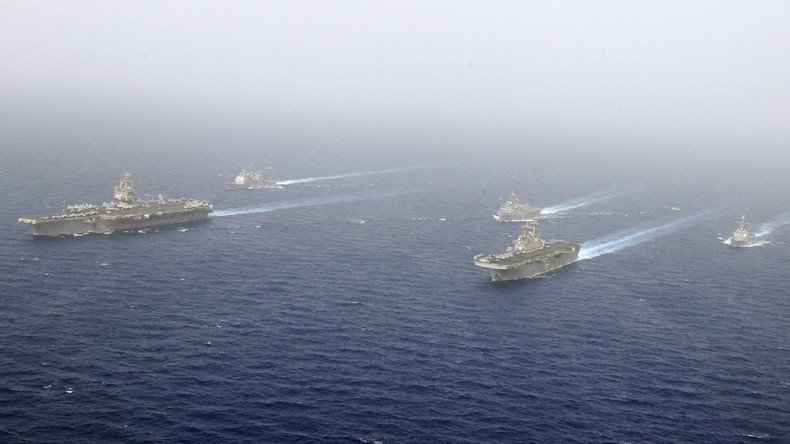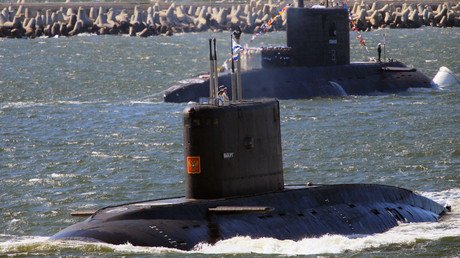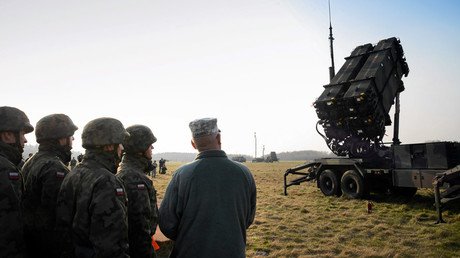US Navy chief wants larger fleet to counter global powers like Russia & China

The US Navy needs to increase its fleet in order to match near-peer opponents such as Russia and China, its commander said, adding that the world is entering an era of maritime competition between global powers.
“We are getting back into, after decades really, an era of maritime competition,” Chief of Naval Operations Admiral John Richardson told reporters at a Singapore naval base used by the US.
“Some of these global powers, China, Russia, they've been growing, China in particular. They're maturing in every dimension of power [and] at some point you turn to the sea to expand and continue to prosper.”
Richardson argued the US Navy must catch up other countries that are massively investing in maritime prowess.
“We have to be mindful that that environment is moving forward at a particular pace and if we’re going to remain competitive we’d better pick up that pace and match it at least, if not exceed it,” he said.
The statement apparently comes in line with the current US military policy. Earlier, President Donald Trump announced a massive naval rearmament program aiming at expanding the Navy’s fleet to 350 warships from about 272 now. In the meantime, American naval forces have become more active in areas adjacent to Russia’s and China’s shores.
Over the past months, US Navy ships entered on numerous occasions the Baltic and Black Seas, approaching Russian waters to demonstrate naval presence; such voyages also included numerous maritime exercises with Washington’s NATO allies.
Responding to emerging challenges, the Russian Navy has launched an ambitious program to modernize and enlarge its surface and submarine fleets. Among the top priorities is building several cutting-edge Borey-class nuclear-powered submarines, deemed the backbone of Russia’s strategic deterrent. Russia currently operates four of these submarines and has seven in various stages of construction.
The Navy is also acquiring next-generation frigates, including the Admiral Gorshkov-class and the Admiral Grigorovich-class ships. Both are intended to replace ageing Soviet-era Sovremennyy-class destroyers and allow Russian military to project power in high seas. Procurement of new corvettes, a class of smaller littoral ships suitable for defending Russia’s coastline, is also underway.
Last year, the Russian Navy deployed a number of warships to the Eastern Mediterranean as part of the large-scale operation to combat Islamic State (IS, formerly ISIS/ISIL) in Syria. The Navy carried out offensive operations hitting terrorist positions with cruise-missiles and rendered logistical support to Russian troops stationed on Syrian soil.
Russia’s naval modernization has not gone unnoticed in the US with some top military commanders claiming that Russian submarines are able to challenge Western maritime dominance in the Atlantic. Others, like Admiral Mark Ferguson, commander of US Naval Forces in Europe, said Russia prevails over the US in terms of efficiency of covert submarine deployments.
“We're seeing [the Russians] have more advanced weapons systems, missile systems that can attack land at long ranges, and we also see their operating proficiency is getting better as they range farther from home waters,” he told CNN last year.
“We cannot maintain 100 percent awareness of Russian sub activity today. Our attack subs are better, but not by much.”
In the meantime, the US Navy remains the largest maritime force in the world given its ability to maintain a sizeable global presence. The US is the only nation in the world that operates 12 carrier strike groups capable of patrolling oceans and posing significant threats to Washington’s adversaries.
For instance, the recent deployment of the USS Carl Vinsson strike group to the Korean Peninsula drastically raised stakes during stand-off with North Korea, prompting numerous threats of military action from Pyongyang.
Russian military leaders have suggested that the statements coming from Washington's brass have more to do with wanting a bigger defense budget than with actual security threats to American interests.














